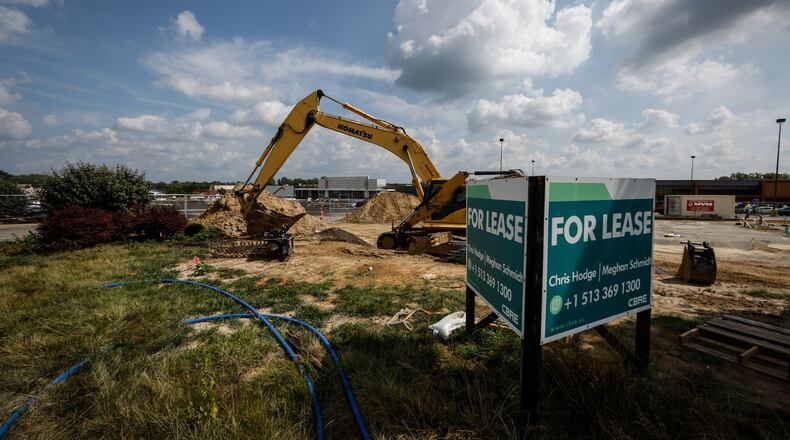The state and national numbers are seasonally adjusted, accounting for increased hiring around winter holidays and related layoffs early in the new year, said Bill LaFayette, founder of Columbus-based economic analysis firm Regionomics. While the Ohio Department of Job and Family Services reports labor figures at the county level, those are not seasonally adjusted, so it’s hard to discern overall trends, he said.
And the unemployment rate is driven not just by changes in the number of people working, but by the also-changing number of people looking for work, LaFayette said.
“When I look at the national numbers, the labor force is steadily rising, and so is the number of people working,” he said. But the number of people finding jobs is outpacing new arrivals in the labor force.
“That is as good as the news ever gets,” LaFayette said.
For the last few months in Ohio, the unemployment rate has ticked up — from 4.7% in April to 5.2% in June, and now 5.4% in July — due to an overall drop in the number of people working.
“But here is the other thing. You’ve got to take those numbers with a grain of salt, because they’re based on a relatively limited sample,” LaFayette said.
It does appear that unemployment in the Dayton region is, on the whole, slightly higher than the state average, said Stephanie Keinath, vice president of strategic initiatives for the Dayton Chamber of Commerce.
“We’re really looking at a little bit of turmoil in the local market,” she said.
Businesses are still having trouble finding workers, perhaps due to worker’s continued hesitancy due to COVID-19, Keinath said.
“What we’re watching closely is that as the kids return to school, we’ve realized that the impact of education and child care on our work force has been pretty significant,” she said.
Working parents need access to child care and assurance that their kids will regularly be in school, Keinath said.
So employers are “getting creative” by offering more flexible schedules, she said, and seeking to collaborate with state and local partners to fund child care.
Expanding access to and improving affordability of child care are the pillars that must support economic recovery, Keinath said.
There is seasonally adjusted data for the Dayton Metropolitan Statistical Area, which covers Montgomery, Greene and Miami counties, LaFayette said.
“Since December, the number of jobs in the Dayton metro has increased 1.2%, and in Ohio it has increased 1.2%,” he said. “So at least so far this year you are keeping track with what’s going on statewide.”
Neither is keeping up with national trends; early in the comeback from COVID-19 shutdowns, Ohio was doing better than average, but growth has slowed over the past seven months, LaFayette said.
Over the long term, it’s not unusual for Ohio’s employment growth to lag the national average, partly due to Ohio’s heavy concentration on manufacturing, he said. Even when manufacturing is doing well, the number of factory jobs grows slowly because of increasing efficiency.
“You can get a lot more output with a given number of workers now than you could even 10, 15 years ago,” LaFayette said.
And, as shown in the 2020 census that found Ohio’s population only grew by 2.3% in the past decade compared to the nation’s 7.4% growth, there just aren’t that many more new people to patronize Ohio businesses.
“That tends to cause employment to grow more slowly, because there are so many industries that rely on a local customer base, everything from attorneys and barbershops to retail stores, all kinds of different services,” LaFayette said.
The biggest percentage decline in Ohio’s jobs for the past month was in state government, 0.9%. Education-related jobs probably account for most of that, he said. In the Dayton area, most government jobs are connected to the federal government, which offers some shelter from the state trend, LaFayette said.
The biggest growth sector in Ohio last month was accommodation and food service, adding 8,000 jobs for a 1.9% increase. That’s a bright spot for a sector that was particularly hard hit by the pandemic, Keinath said.
There was lots of room to grow because those jobs were “absolutely skewered” last year, cut in half during the first two months of COVID-19 lockdowns, LaFayette said.
“I’ve never seen anything even remotely like it,” he said.
Now, restaurants and hotels should still be worried because of the rapidly spreading Delta variant, LaFayette said.
“That caused a huge decline in the University of Michigan’s consumer sentiment index, one of the biggest declines they’ve ever seen,” he said. “Nobody thinks that’s going to put us back into a recession, but it’s already affecting travel and tourism.”
About the Author

